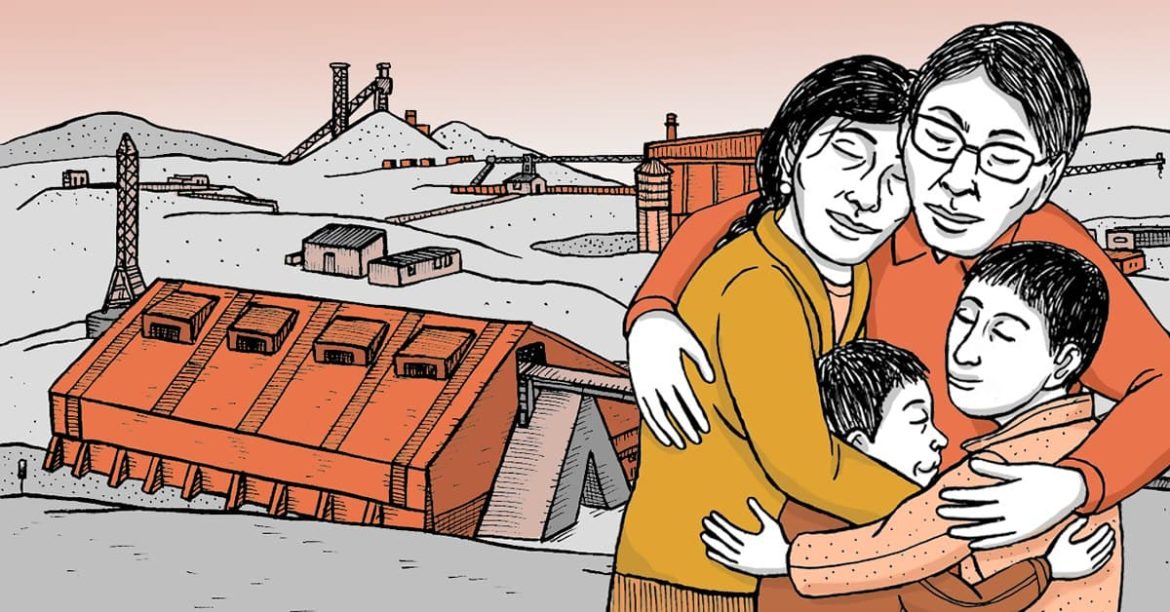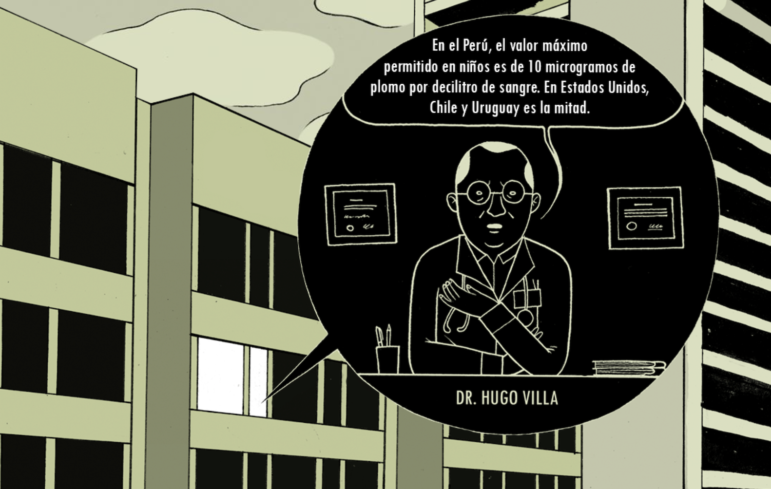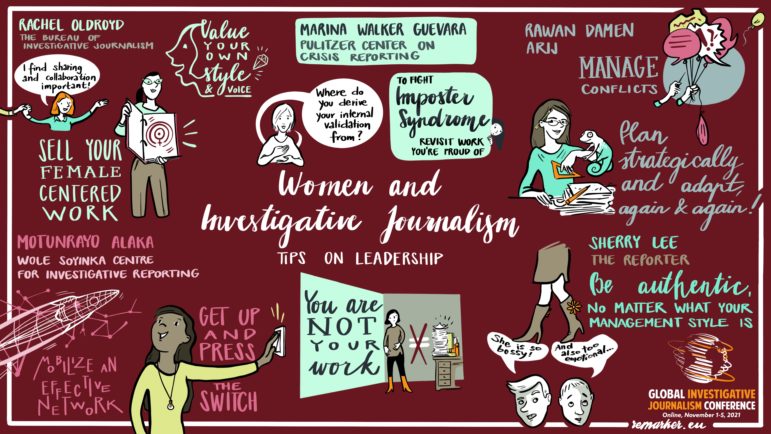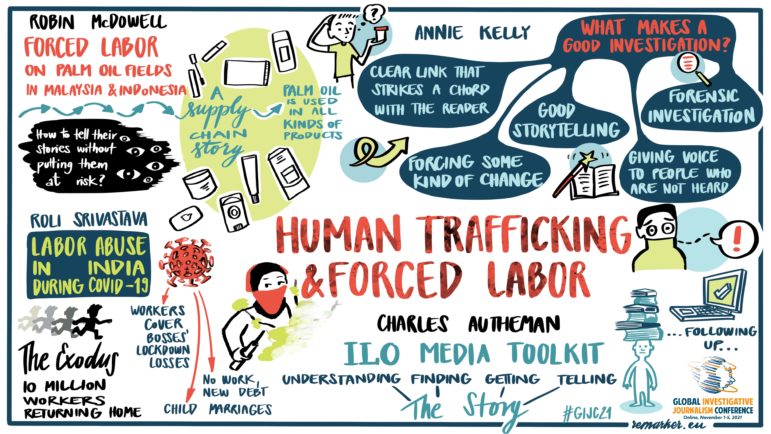

Using Comics, Music, and Theater to Bring Investigative Journalism to New Audiences

An image from a comic created by Peruvian outlet Convoca to convey the dangers of living in areas where toxins like lead are released into the atmosphere. Image: Courtesy of Convoca
Convoca, a digital investigative platform based in Peru, wanted to show how people poisoned by lead released from heavy industry were also struggling with COVID-19. Their chosen medium: comics.
Milagros Salazar Herrera, the director and founder of Convoca, a GIJN-member, said the team chose an interactive comic to tell the story because “that could help citizens understand a complex reality.”
“Beyond political preference, as investigative journalists we wanted to draw attention to people’s health situation,” she said at the 12th Global Investigative Journalism Conference (#GIJC21). “Therefore, exploring an innovative format was necessary to tell a story in the public interest.”
To accomplish this, Convoca’s reporters worked with cartoonists and programmers to identify people’s accounts that could be told in the form of graphic storytelling. Herrera said it was important to find stories of poisoning victims that were backed by solid evidence.
“It was also important to choose a story in which sources and documents were accessible,” Salazar added. “The collaboration of the affected population featured in our story was essential.”
The team also had to determine the most user-friendly technology to use. The comic needed to load quickly and be adaptable to both desktop computers and cell phones.

A panel from a cartoon created for Toxic Records: The Comic, by Convoca. Image: Courtesy of Convoca
The use of innovative storytelling techniques is not limited to comics in Peru. To reach new audiences, investigative journalists around the world are increasingly experimenting with novel ways to tell their stories. Consider, for example, the work of a team led by Ian Urbina, a former New York Times investigative reporter and now director of The Outlaw Ocean Project. Urbina’s team has worked with musicians to present investigations on sea-based human rights violations and environmental concerns.
Urbina said this was necessary because they wanted to reach a wider audience that would not read long investigative articles, but who constantly consume content on social media: “We teamed up with storytellers of a different sort — namely musicians — and we did so because they have their own following and have access to platforms that we don’t.”
Urbina said he was struck by the number of stories out at sea — a place the team calls “the last untamed frontier” — and the lack of reporting on the oceans. While the stories the team reports are investigative — covering the use of ships as migrant holding stations, poaching, illegal fishing, and human slavery — they often use music and other creative forms to tell them.
The third speaker at the workshop, Jenna Welch, producing artistic director at StoryWorks, a documentary theater company that transforms investigative journalism into plays and audio dramas, said there is a dialogue to be had about fact-based reporting and how it is presented.
“Facts define the art and the beautiful gray area,” she said. “I love the moment facts and findings transform into art. The gray areas are where we have to rely on our principles, our ethics and instincts, and our incredible curiosity and resonance. If we cannot verify it, we do not take that kind of leap. We take a lot of creative risks but we do not with the facts.”
Tips for Innovative Storytelling
The speakers encouraged journalists to expand their repertoire of storytelling techniques. Salazar said the team needs an understanding of how a project should look and work, while keeping an openness to new formats and ways of telling investigative stories.
“It is important to have multidisciplinary teams of agile and flexible professionals eager to learn from each other,” she said. “A lot of openness to new knowledge is required to achieve an effective result. Establish effective communication channels and listen to the contributions of team members.”
Urbina acknowledged that deciding how much journalistic content goes into their more creative and artistic products is still an ongoing learning process. It’s important, he said, to draw boundaries that cannot be crossed. Being open to reviews is one way his team has navigated the issue.
Welch stressed that the blending of investigative journalism with the arts is an idea whose time has come. Both, she said, have a similar core goal: “Searching for the truth.”
Additional Reading
How a Comic Series Reveals Heavy Metal Poisoning in Peru









